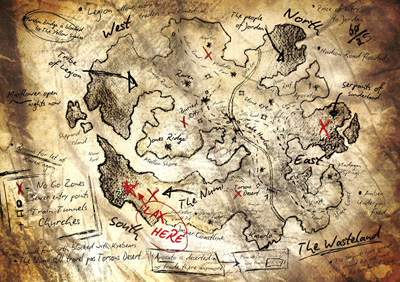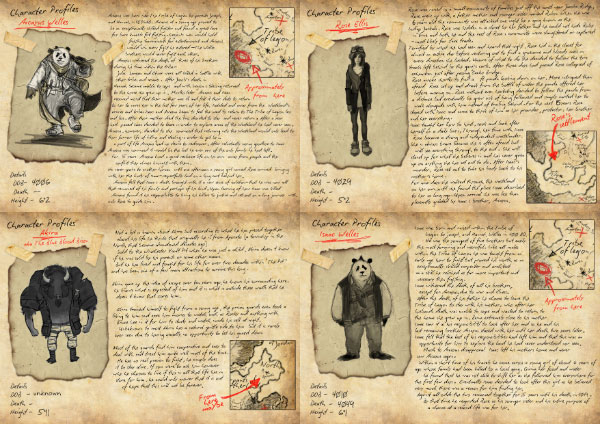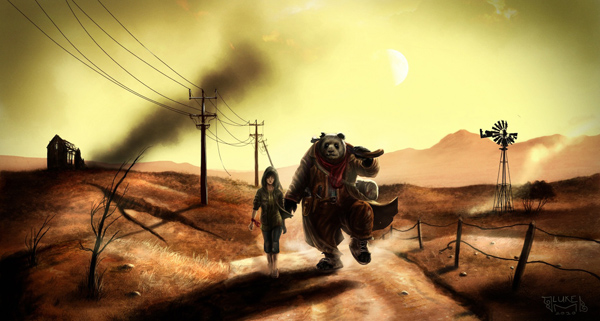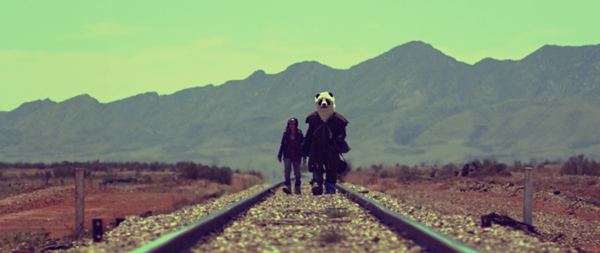by Kirsty Stark (Producer), Ella Macintyre (PMD) and Victoria Cocks (Writer/Director)
Part 1. Development: Creating the Storyworld of Wastelander Panda
One of the first questions we’re asked when people hear about Wastelander Panda is “How did you come up with the idea?” It’s a strange concept – the meshing of two ideas that don’t necessarily fit – but this seemingly incongruous pairing is one reason we believe the project has had so much attention so far. Our initial three-minute Prologue, designed to test the concept and see if we had an audience, had over 100,000 views in its first three days online. However, our success hasn’t all come down to luck, but is due to a carefully planned process that saw us create a story world from scratch and go on to implement an online distribution strategy.
Wastelander Panda was an idea that writer/director Victoria Cocks and co-creator Marcus McKenzie came up with during a university lecture. Victoria wanted to try to translate the experience of her favourite video games to film – where players don’t just have one pathway to follow, but can go out and explore a vast world. She came up with the idea of a post-apocalyptic wasteland. The idea of the protagonist being a panda started as a rhyming joke – Wastelander Panda! – and became more serious over time.
The juxtaposition of a panda in a post-apocalyptic world is one that has allowed us to explore different themes around human behavior: What is it that makes someone human, or causes them to lose their humanity? What happens when we reverse the traditional role between humans and animals, so that an animal is taking care of a human? Even looking at themes of family and redemption through the eyes of an animal invites the audience to think about them differently.

However, the key to making Wastelander Panda work online was not about putting a panda in a Wasteland. It came down to creating a vast, rich world first, before developing specific characters and plotlines. Instead of having a singular script, we had a bible from which to work, enabling us to switch between formats, adapt to different lengths and varying budgets, or draw out new plotlines based on feedback from our audience. We have created a project that has the ability to grow and change over time.
The first stage of the process involved creating an idea of the world and everything in it. What was the landscape like? The weather? How did people survive – through foraging or agriculture? What were their ideas about religion? Did they interact with tribes in other parts of the Wasteland?
After answering these questions, Victoria went on to develop characters based on the place that they came from. She found that this led to much richer personalities, as people’s actions and motivations tend to be born of their community and where they live.
Next, she went on to draw a timeline of the world that included historical moments, character interactions and key events. All of this occurred before we wrote a single script, and allowed us to look at the overall world and draw out the elements of the story that would be best suited to different formats.

We began by writing our three-minute Prologue, which focused as an overall introduction to the world of the Wasteland and the character of Arcayus, our central panda. As first time filmmakers, we realized that we had little chance of raising the money we’d need to make a full web series with no proof of our ability to pull it off. The Prologue was intended to explain the story and tone, show how a live-action film about a walking, talking panda would work, and prove the technical ability of the crew to potential financiers.
It had the added bonus of proving that we had an audience, with over 100,000 views in 150 countries acting as our beta testers, and unintentionally providing us with a huge amount of story feedback through their comments. We carefully went through each response to find out what questions and areas of interest existed, before going back to our timeline to draw out the storylines for three short films.
The films were each designed to introduce key characters and narrative threads from the overall story world, and to be viewed either as stand-alone pieces, or as a group. One film, Isaac & Rose, explores the history of the narrative. Arcayus & Rose gives a sense of drama, tone and dramatic tension, illustrating what we would hope to achieve with a longer series in future. The third, Arcayus & Akira, was specifically designed to be short, action-packed and fast-paced, in order to entice online views and draw audiences into the series.
We also designed an interactive map-based website that allows users to explore characters, locations and tribes within the Wasteland, outside of the films themselves. Each film is placed within a map and timeline on the website, in order to give context to their position within the overall world we’ve created.

Our intention is to eventually turn Wastelander Panda into a long-form television series, and we have begun mapping out a pathway to get us there, beginning with an extended short web series, also drawn from our initial timeline. But the potential is there to turn this world into many other formats and mediums – games, graphic novel series etc.
Starting with the world meant that this was never just a film. There is so much richness and detail in the Wasteland, from the tribes that populate different areas to the healing properties of certain plants. Rather than writing a film script, Victoria has created the potential Wastelander Panda to be adapted across multiple platforms and draw a much bigger audience across its lifespan online.
Wastelander Panda is a live-action sci-fi project, written and directed by Victoria Cocks, that tells the tale of the last remaining panda in a post-apocalyptic Wasteland. The first three Wastelander Panda films are available at http://www.wastelanderpanda.com, in conjunction with an interactive map allowing users to explore the Wasteland. The team has now signed a co-production deal with Madman in Australia, and is developing further episodes with the Australian Broadcasting Commission and the South Australian Film Corporation. This series of posts by Producer Kirsty Stark (@kirstysan), PMD Ella Macintyre (@Ella_Macintyre) and Writer/Director Victoria Cocks (@VictoriaCocks1) outlines the process the team went through as first-time filmmakers to bring Wastelander Panda to its current funded stage.





